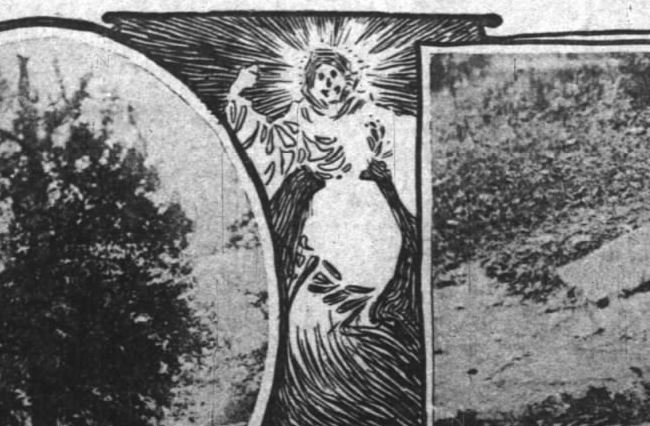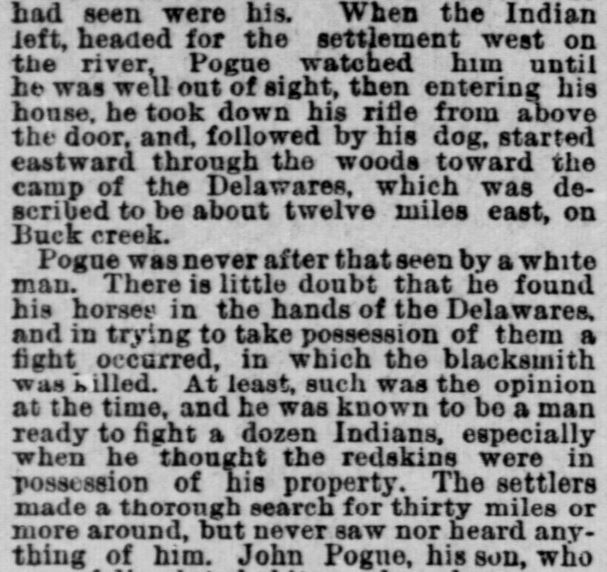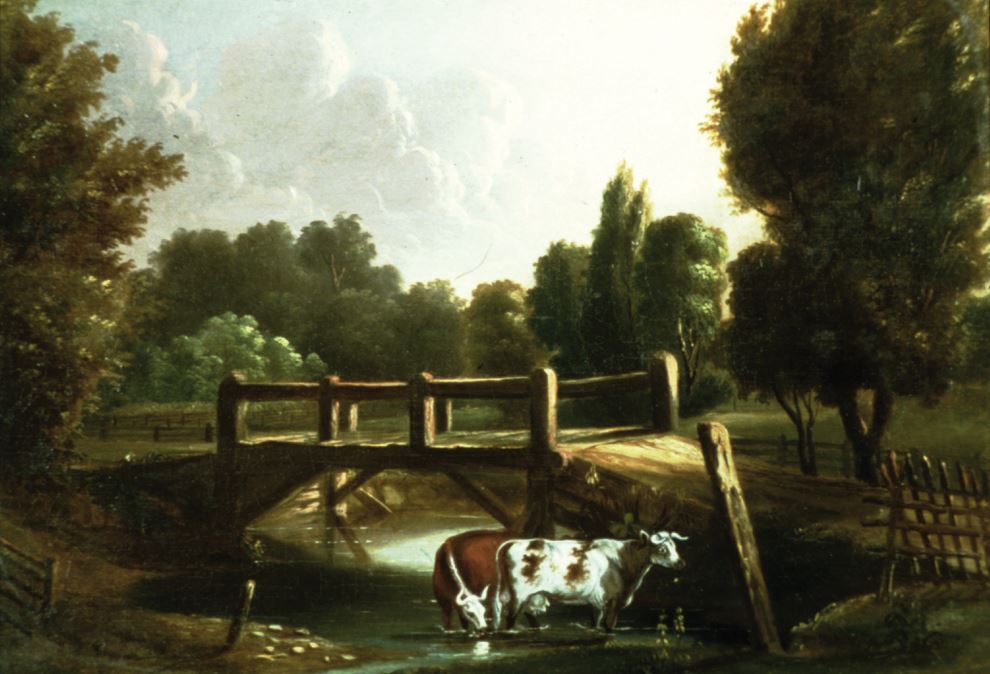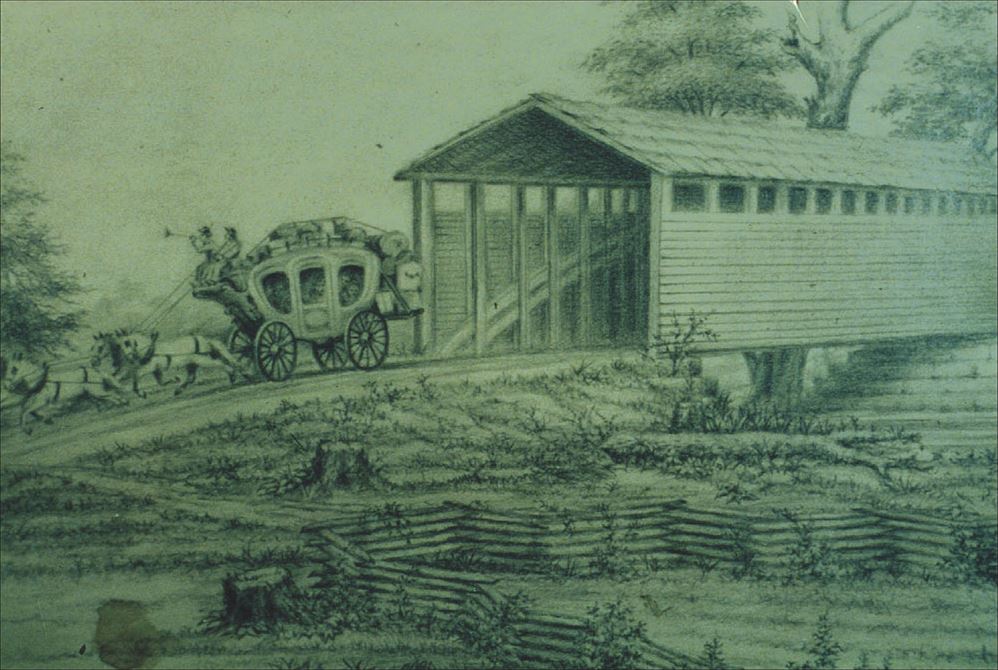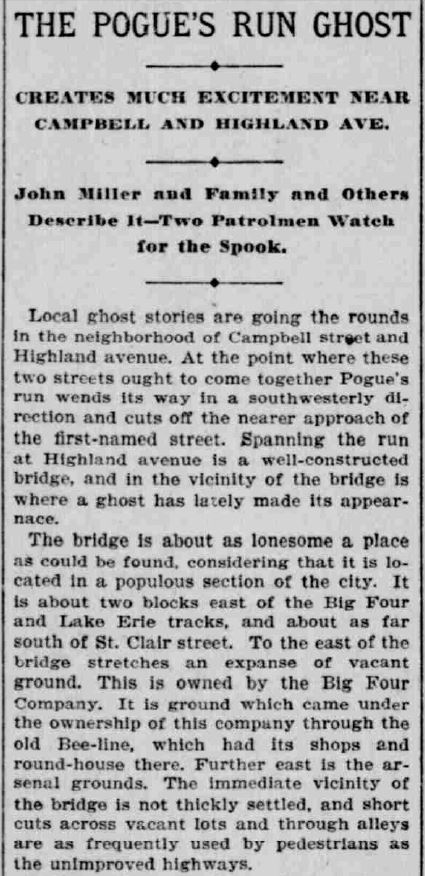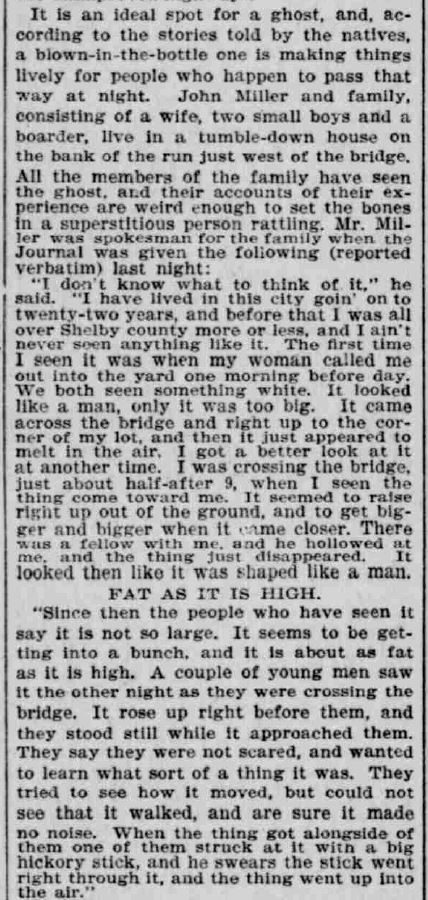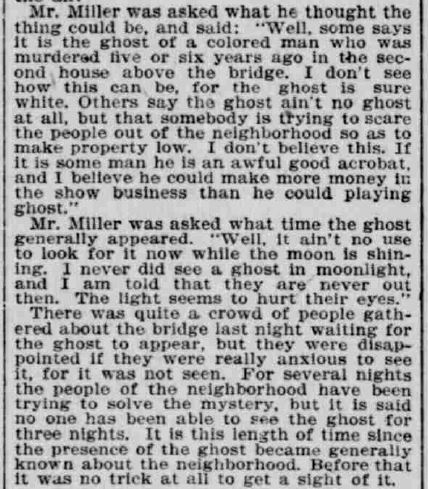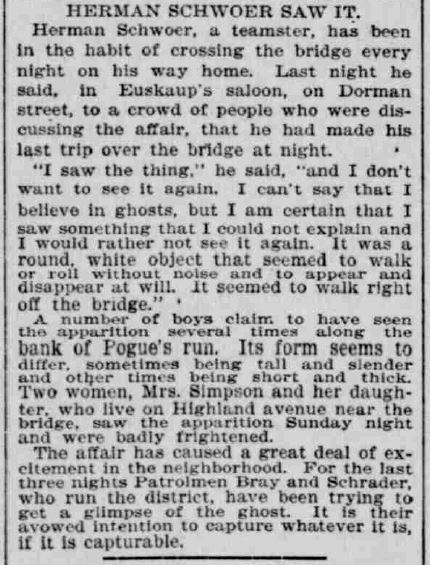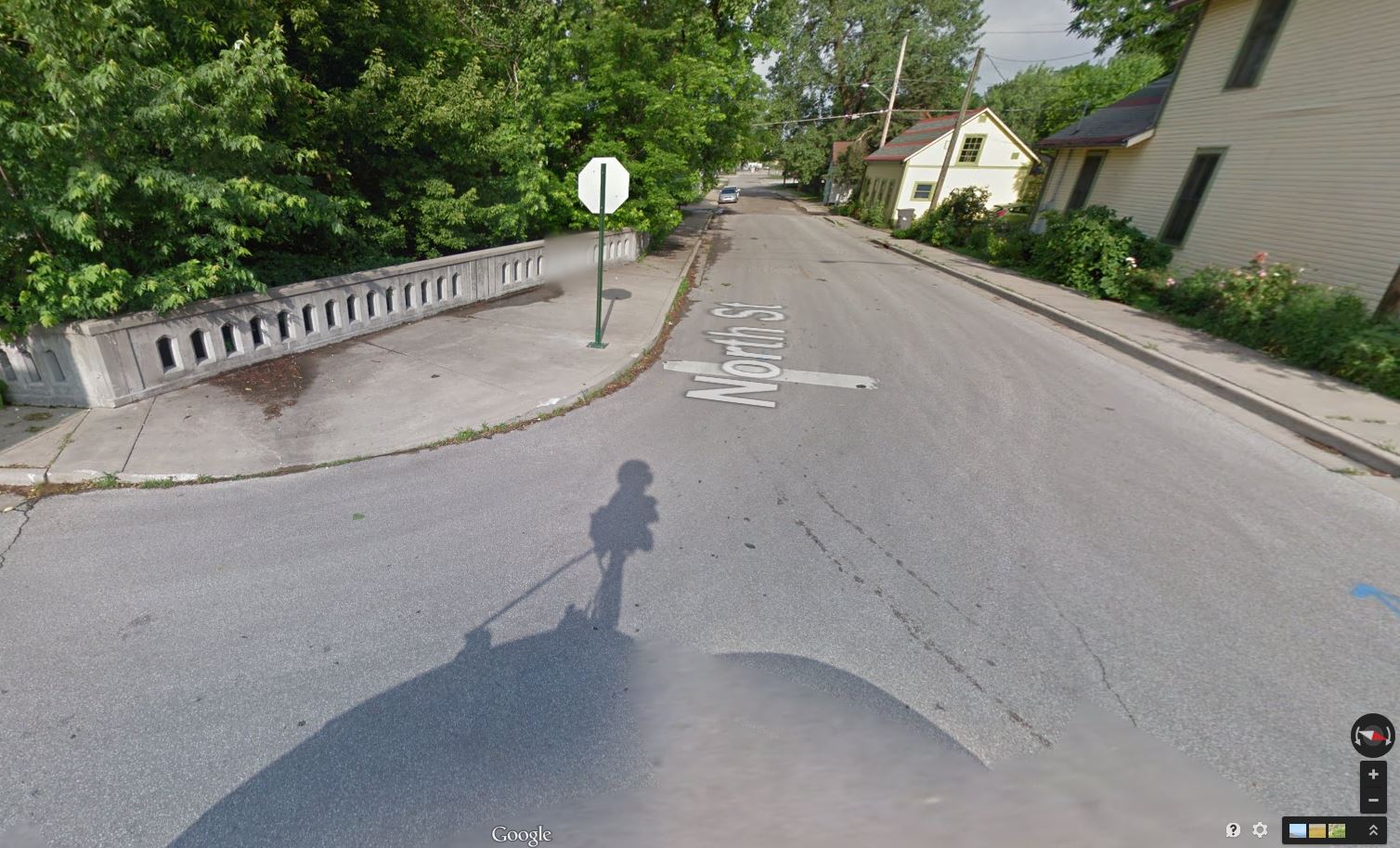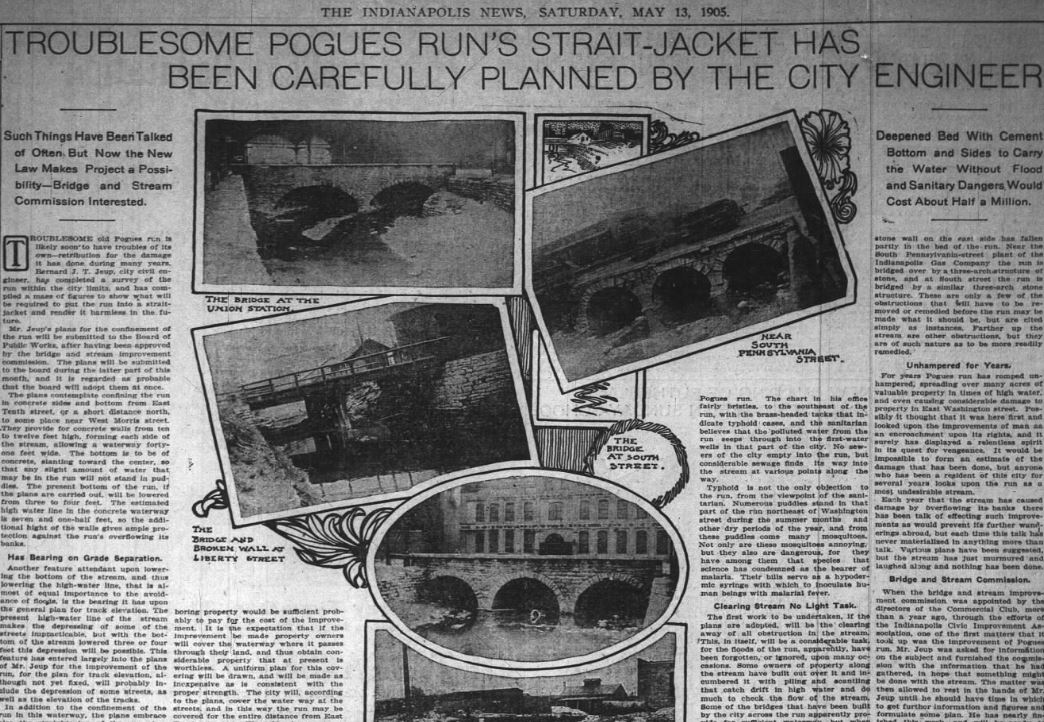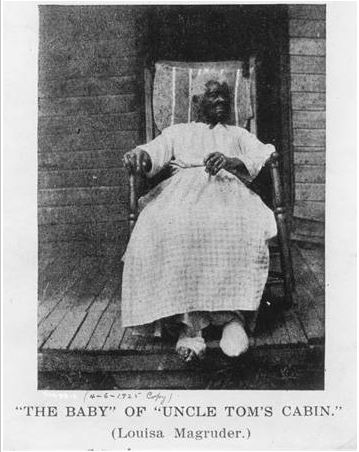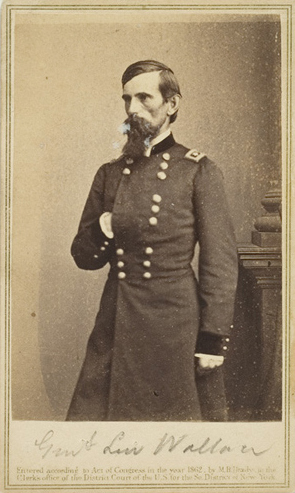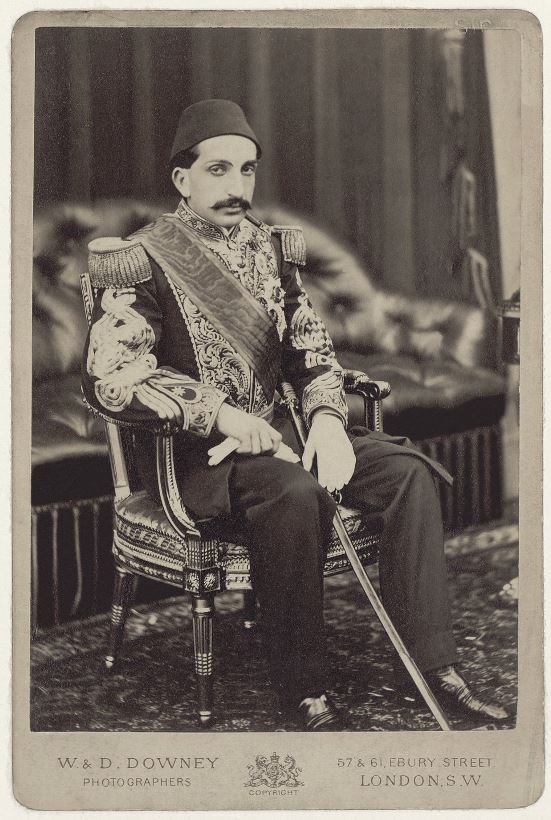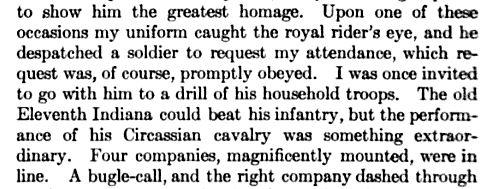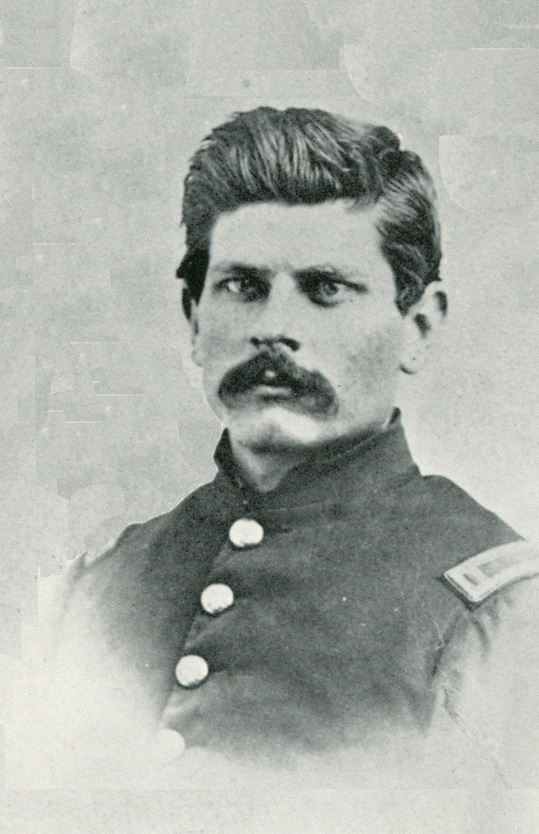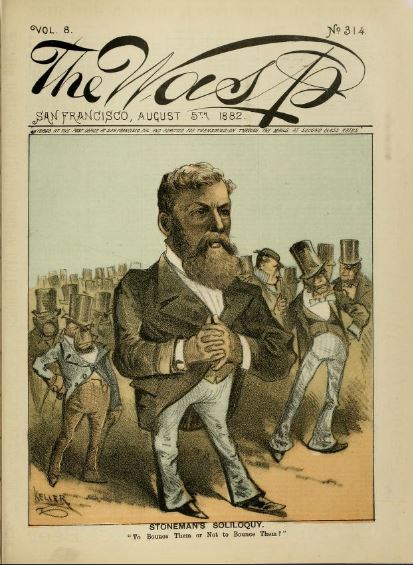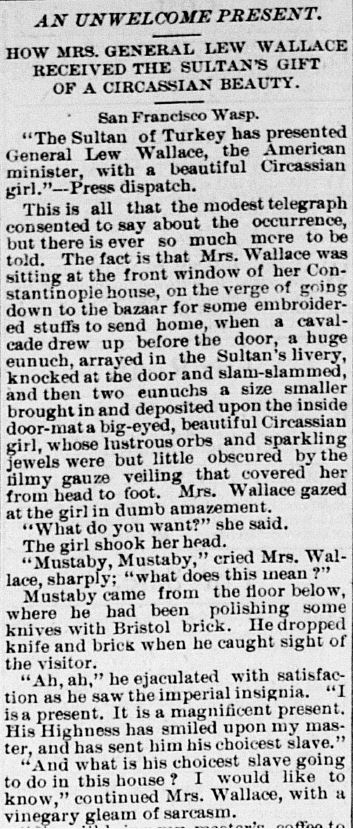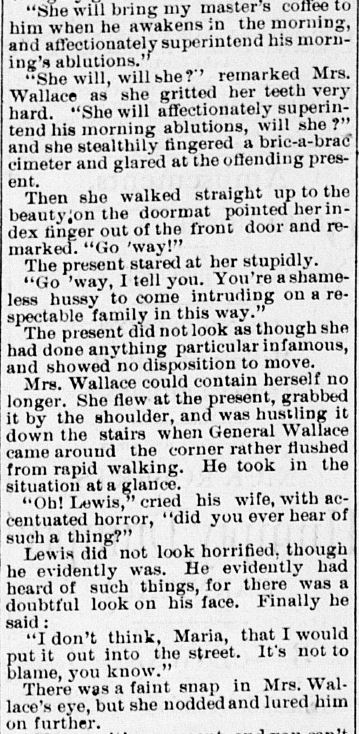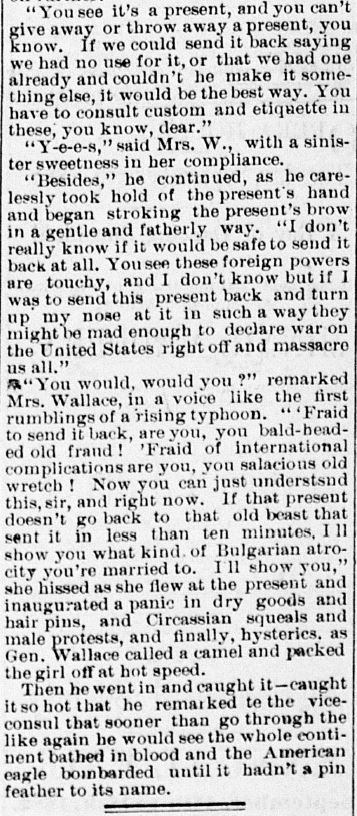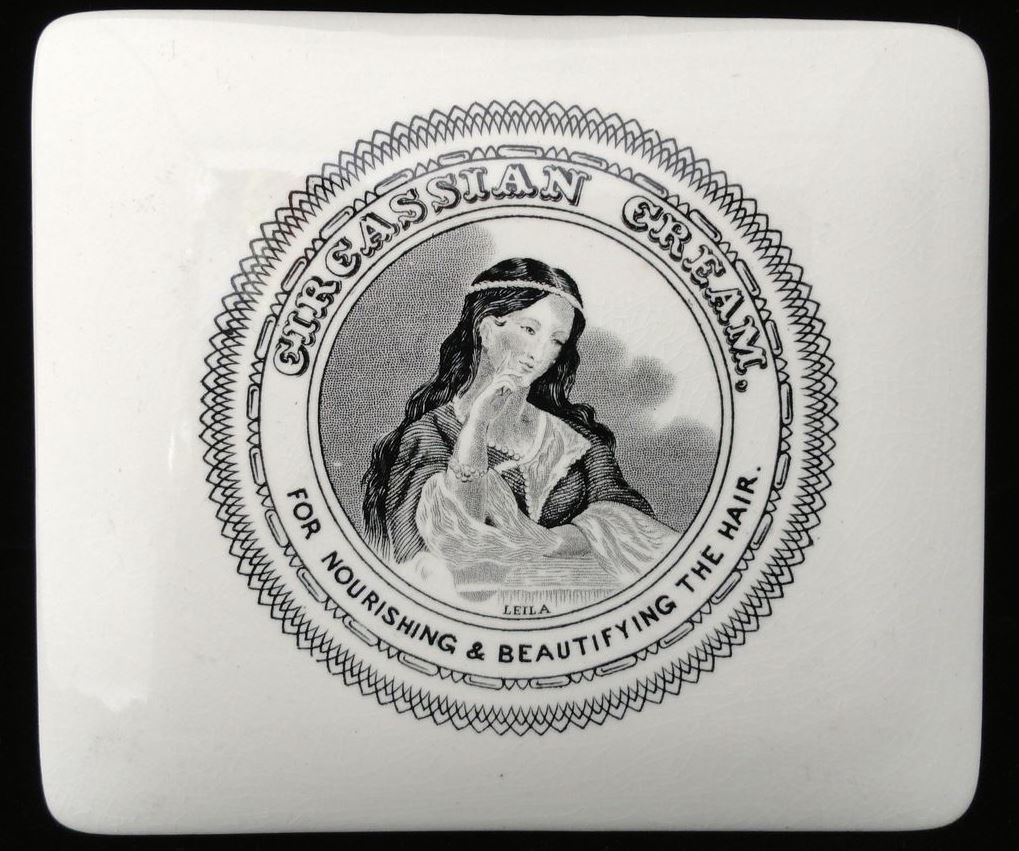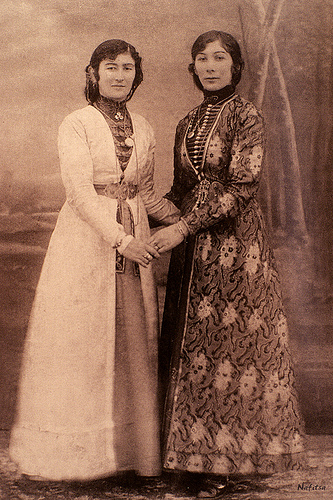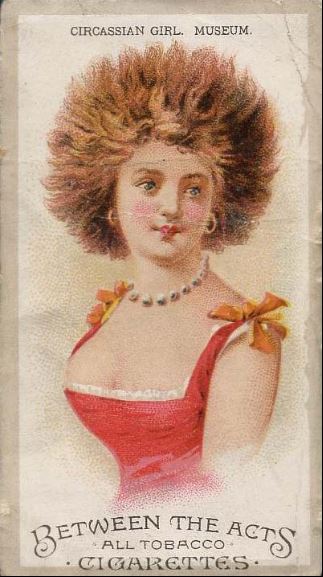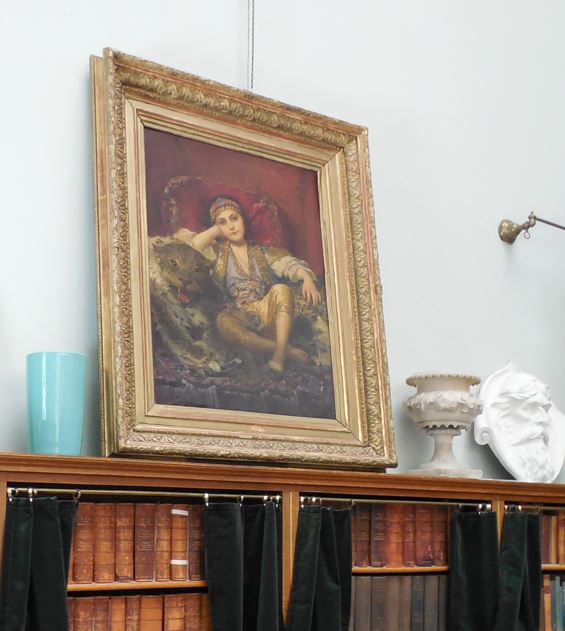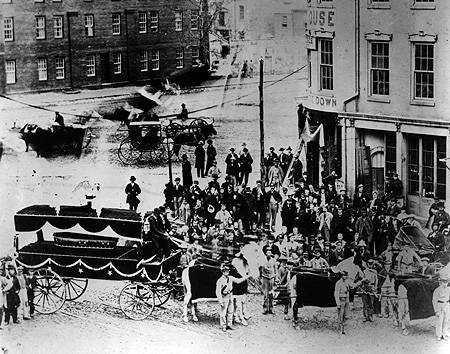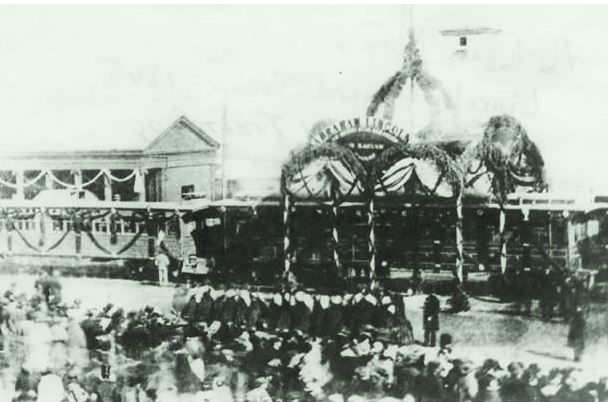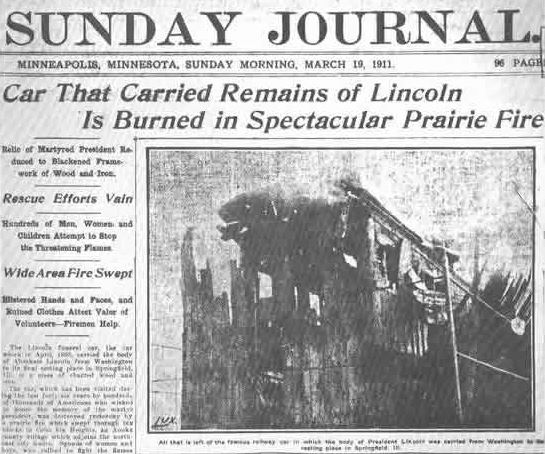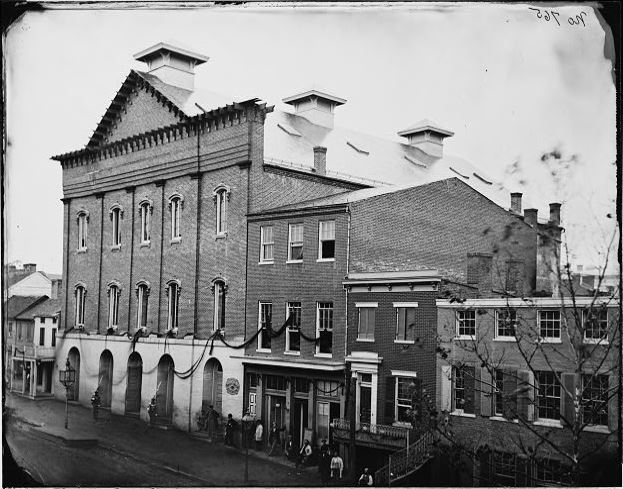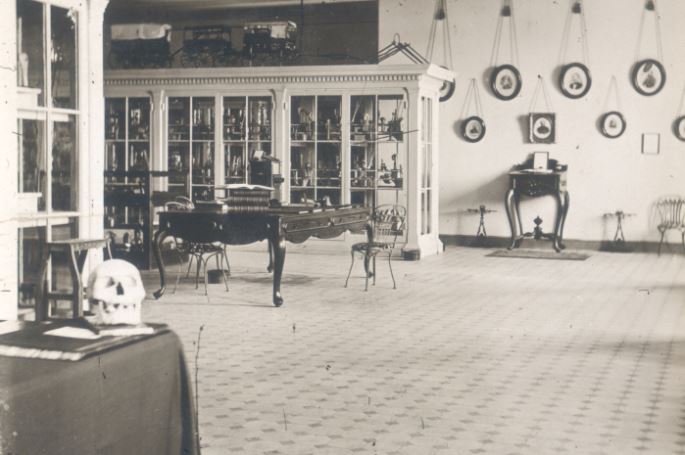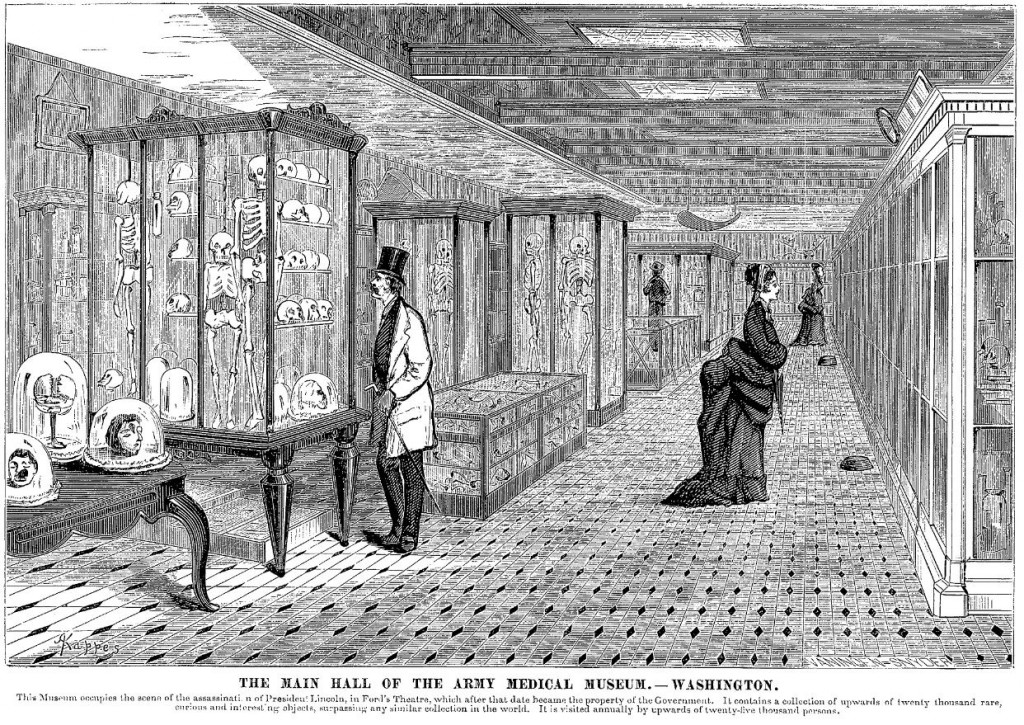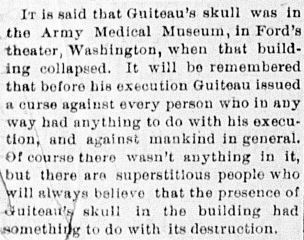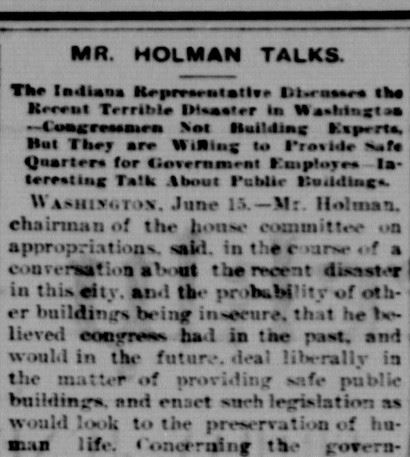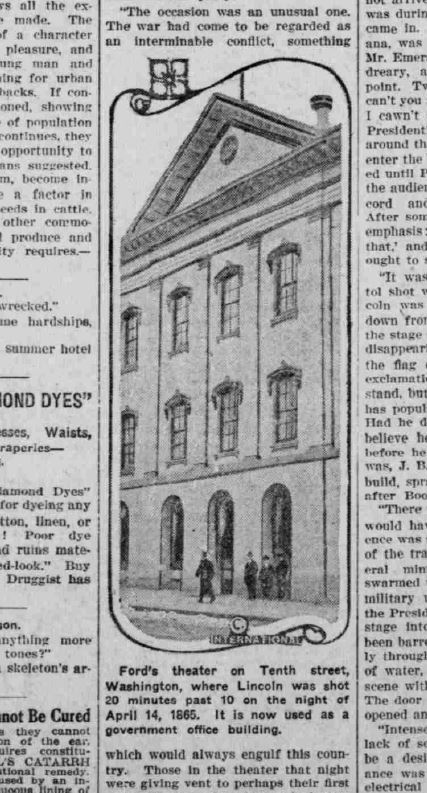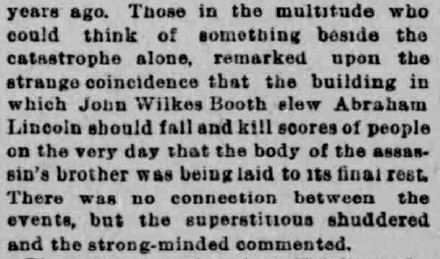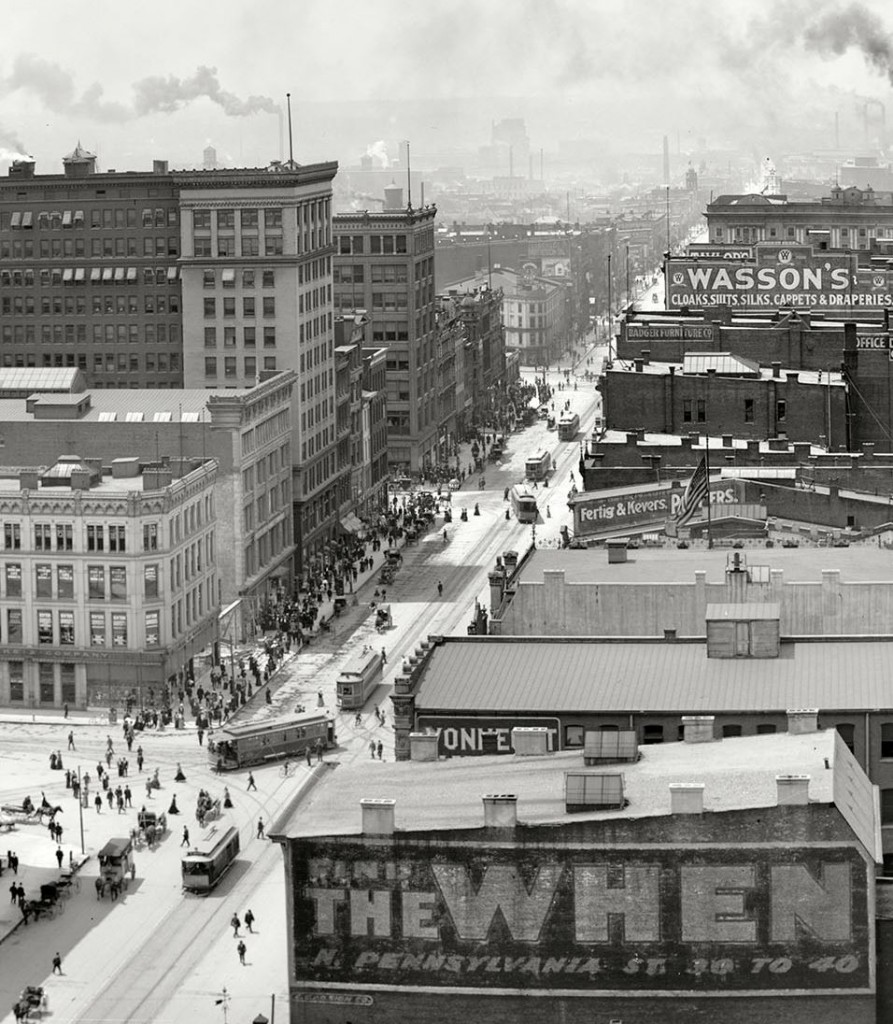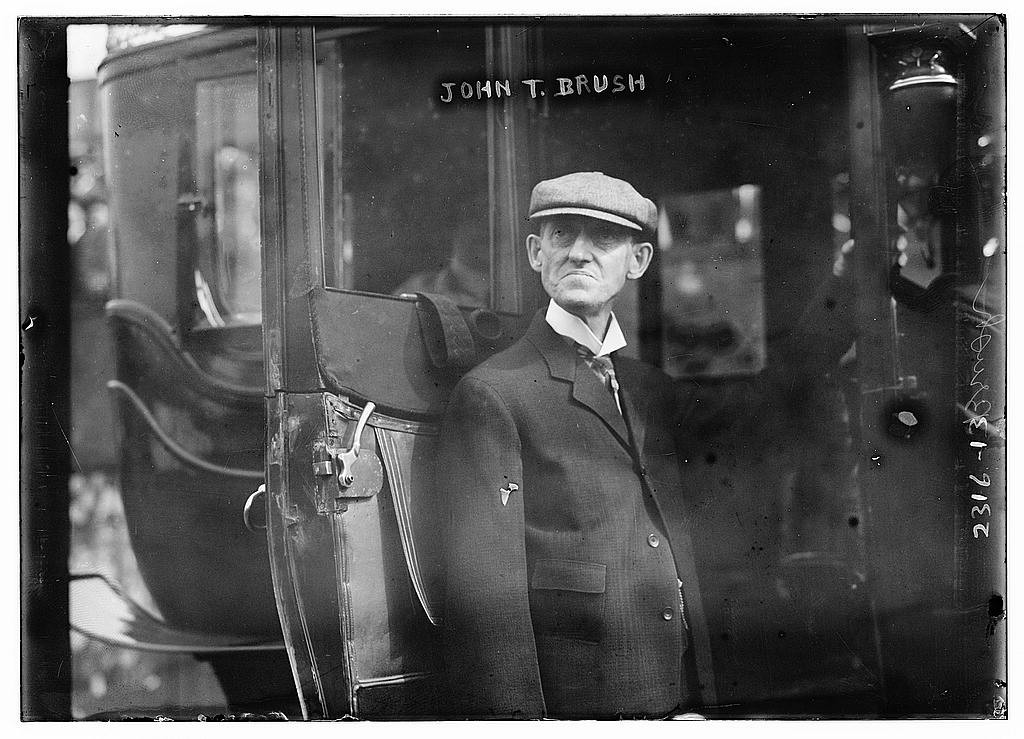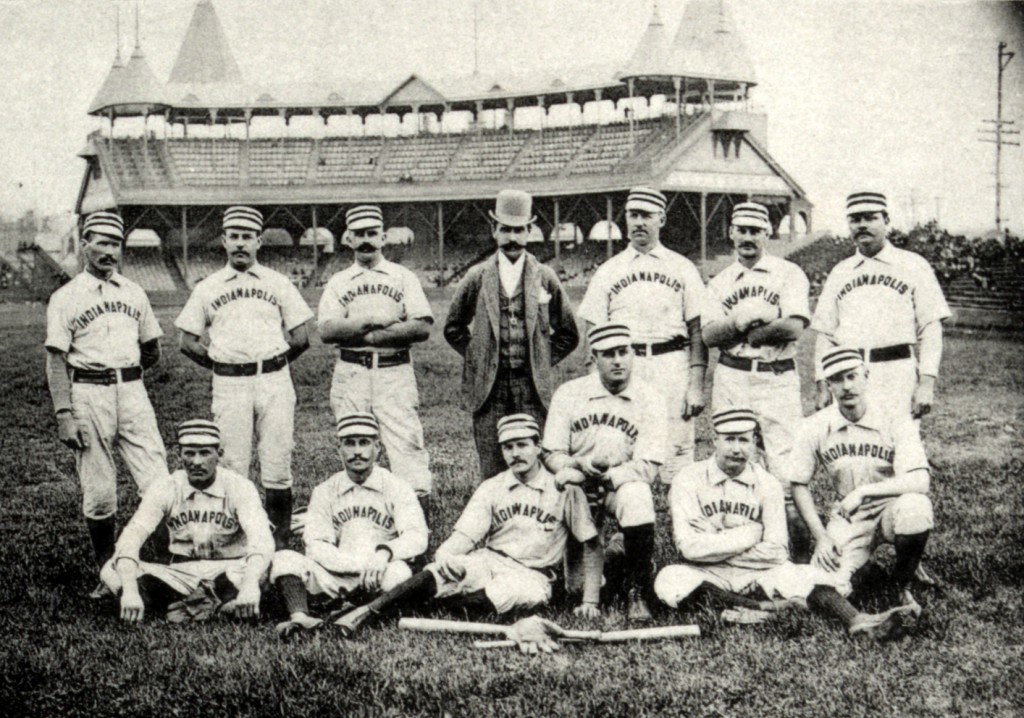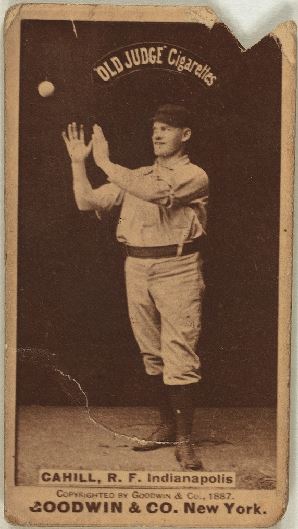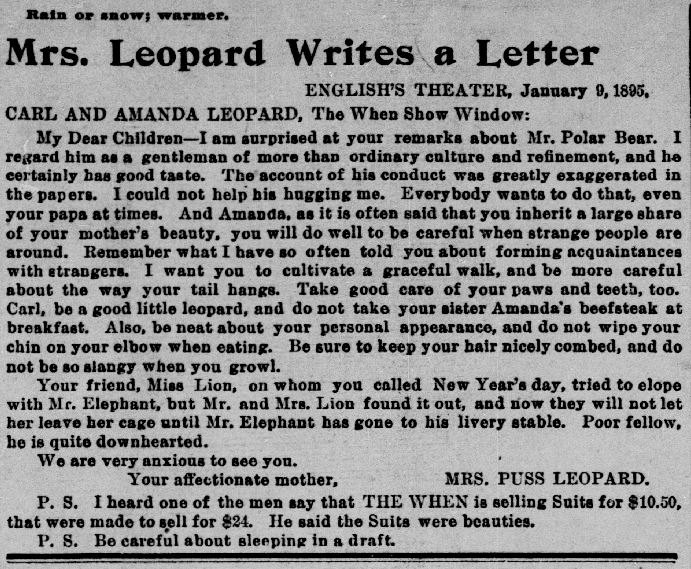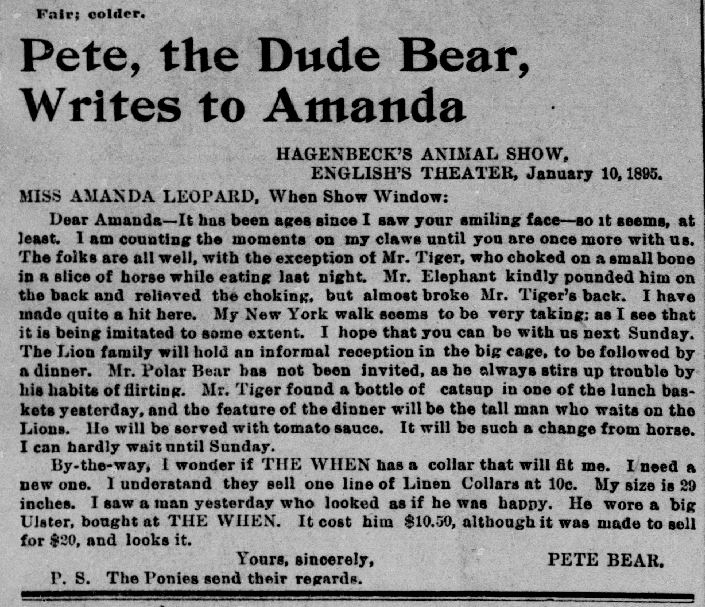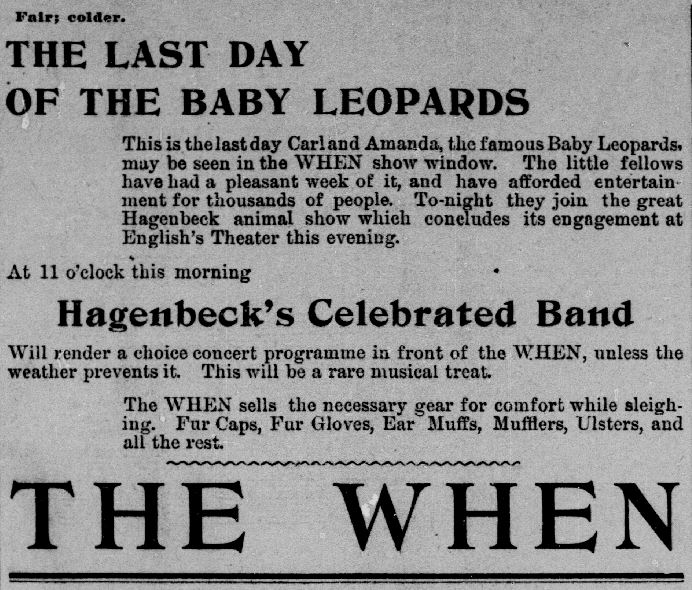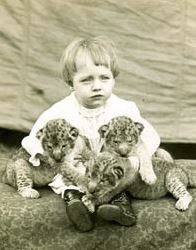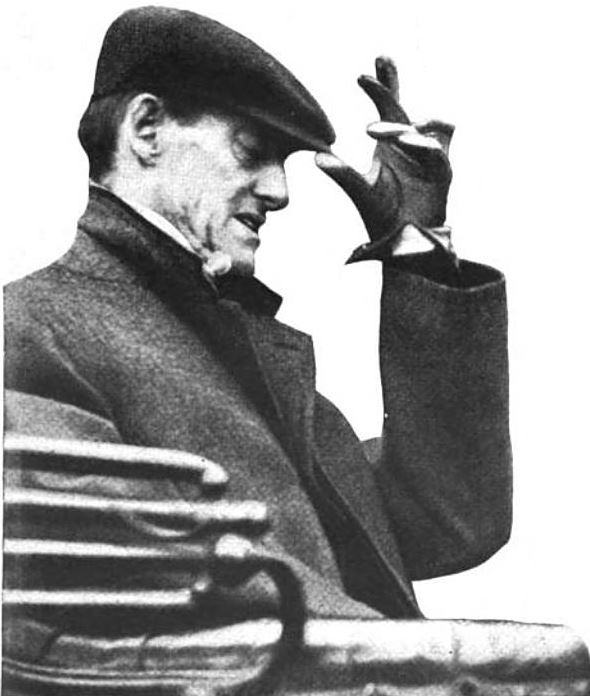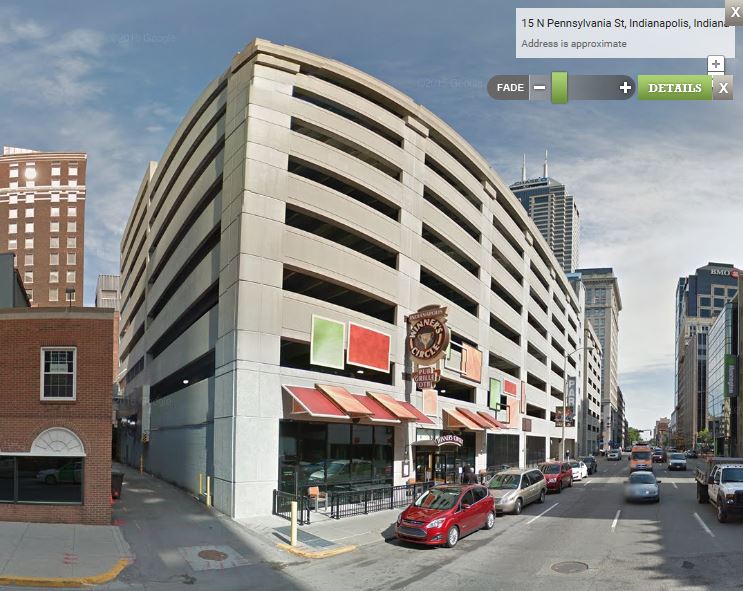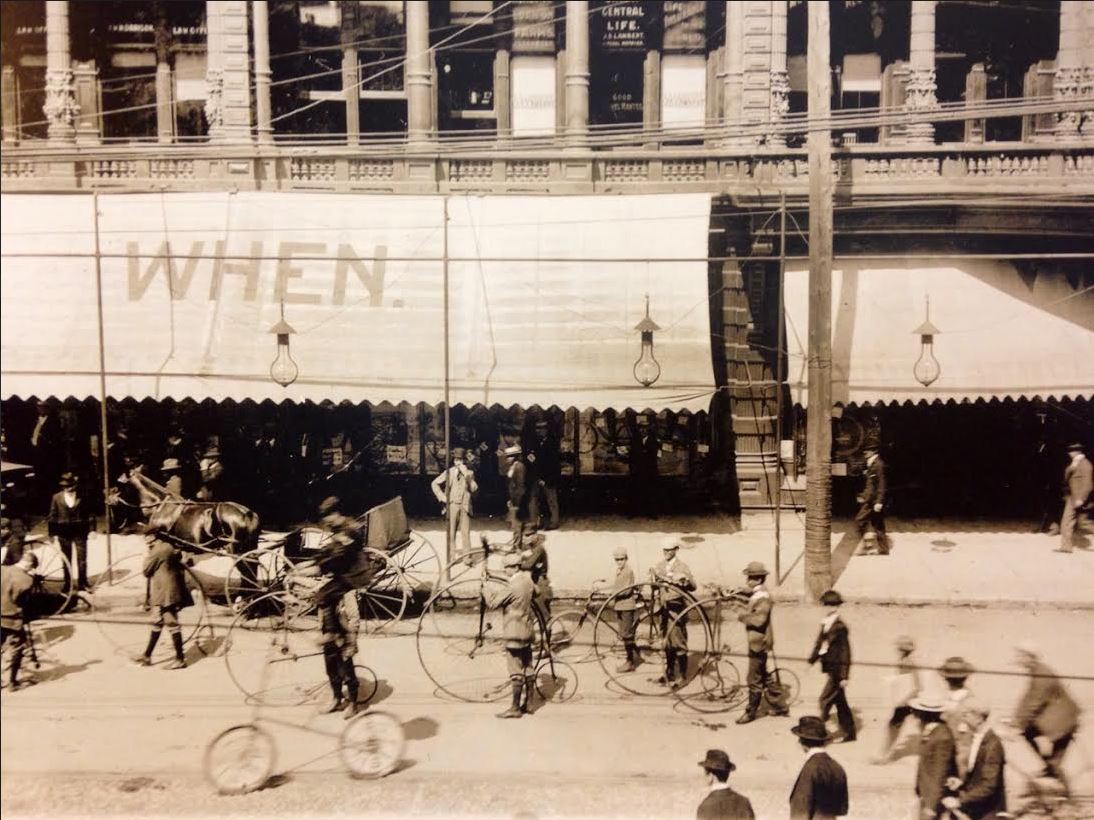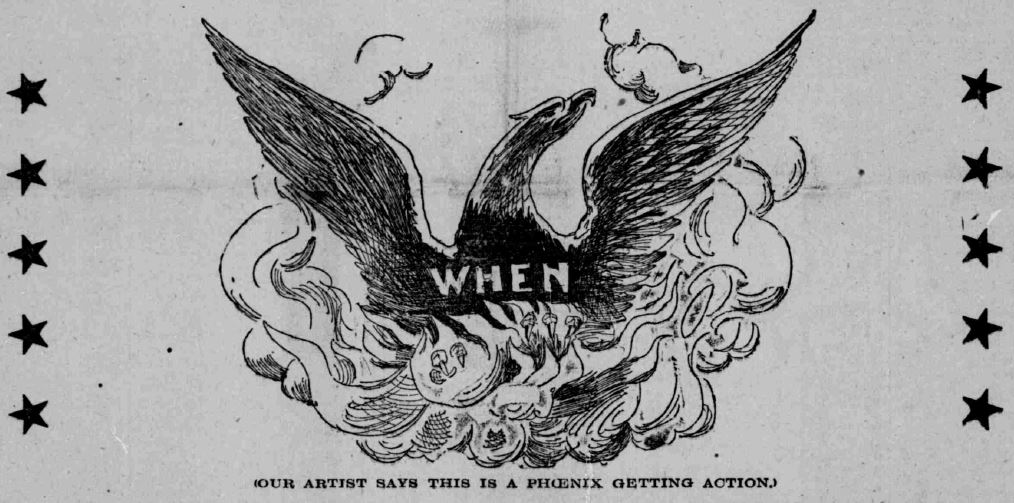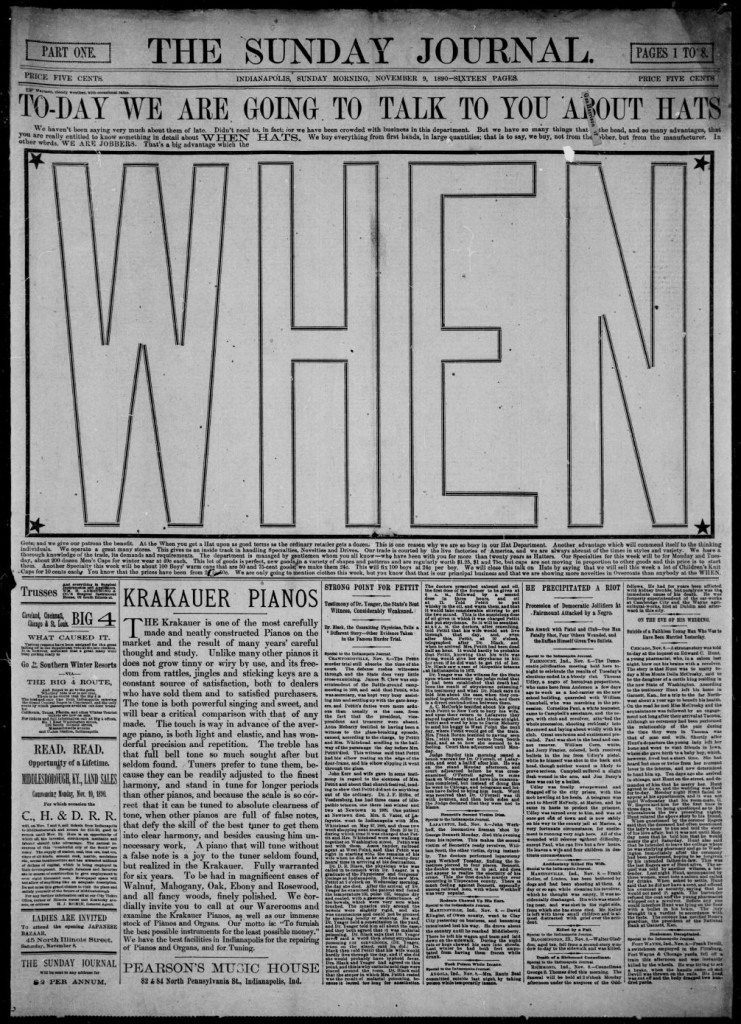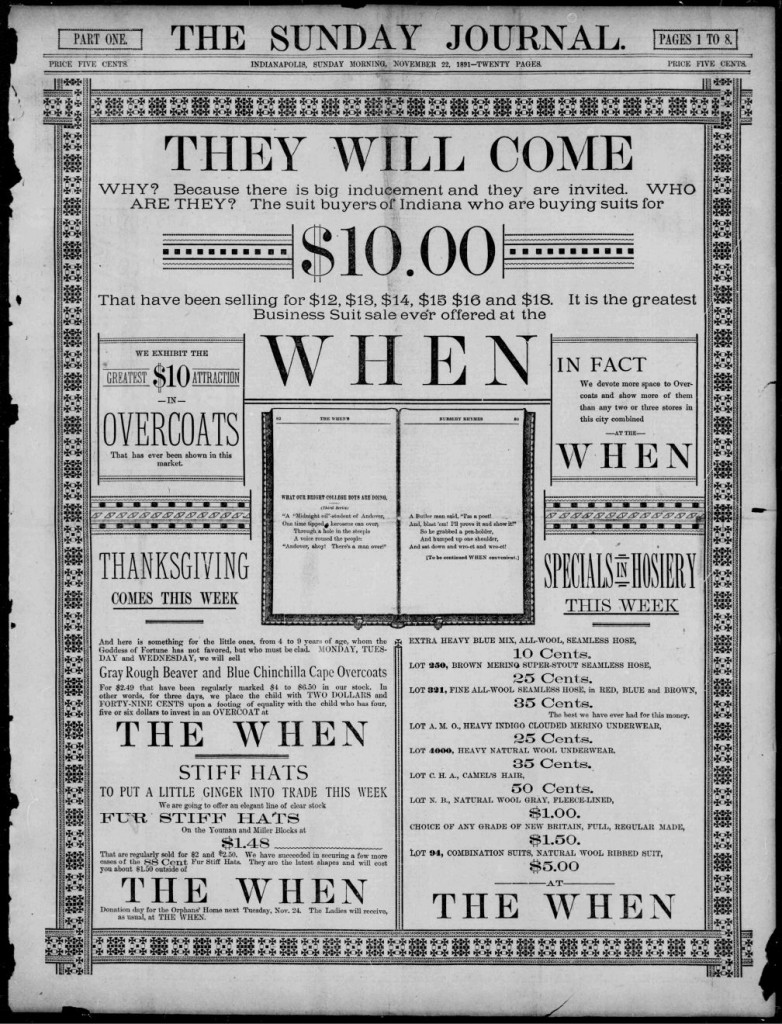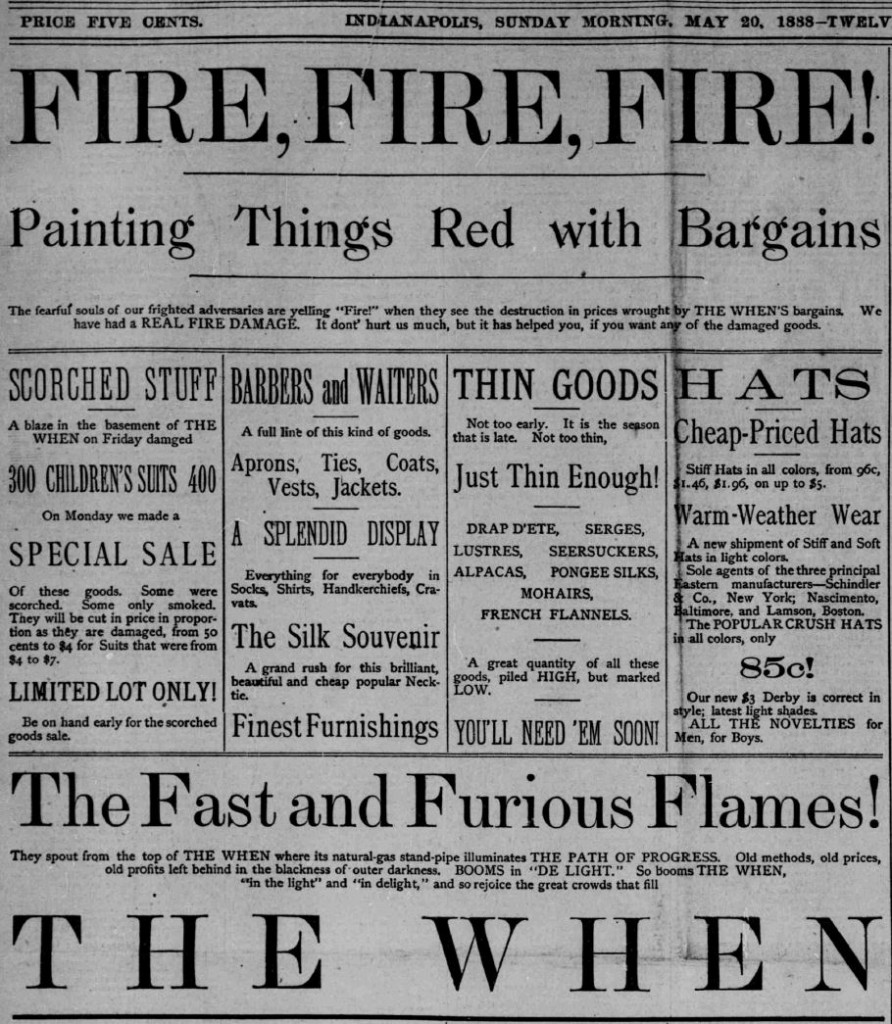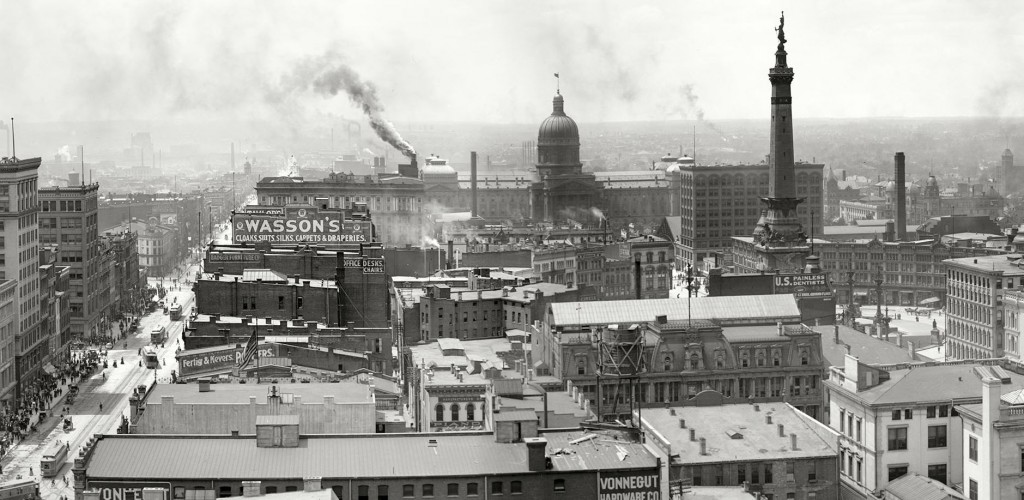
Nature lover, friend of dogs and underdogs, journalistic joker, and shooter-up of men he considered his enemies, George C. Harding once edited newspapers from Cincinnati to Houston but was always most connected with the Indianapolis Journal and the Indianapolis Herald, which he edited in the 1870’s. Part Mark Twain, part Ambrose Bierce, part proverbial “man gone postal,” Harding was called “the most picturesque man in Indianapolis journalism” by city historian J.P. Dunn.
Since he wielded a pistol several times in the capitol city and may have suffered from a mental illness, it’s hard to know exactly how to see him today. But since he’s also been mostly forgotten, here’s a bit of his story.
Born in Clinton, Tennessee, in 1830 to a family of thirteen kids, the future editor of the Indianapolis Journal lived in Knoxville until age seven. In 1837, the family moved to Edgar County, Illinois, where his father, Jacob J. Harding, eventually edited the Prairie Beacon in Paris, twenty miles west of Terre Haute, Indiana. At fourteen, Harding ran away to St. Louis, but came back “penniless and disheartened” and probably worked in a brick factory.
A long obituary published in the Indiana State Sentinel in 1881 says that “When about fifteen or sixteen years of age [Harding] went to Terre Haute and learned the printing art in the office of the Terre Haute Express.” When the Mexican War broke out, he enlisted as a private but got sick (either in St. Louis or New Orleans) and never made it to Mexico. Around 1848, he was co-editing his father’s paper just over the Illinois state line.
George Orwell famously said in 1946 that “Bad writers – especially scientific, political, and sociological writers – are nearly always haunted by the notion that Latin or Greek words are grander than Saxon ones.” When the Indiana State Sentinel published a piece that praised Harding for shooting the alleged seducer of his teenage daughter Flora in 1874, the paper curried public sympathy by praising everything about the man. “His letters at this time, written in strong, sensible, and positive Anglo Saxon,” it said, reminiscing on Harding’s early days in the news business, “without redundancy, attracted considerable attention among readers of the Beacon.”
In the 1850s, he grew restless and floated down the Mississippi to New Orleans, where he may have gotten work as a newspaper correspondent for the Cincinnati Commercial. Before the Civil War, Harding also edited the Courier in Charleston, Illinois, founded the Coles County Ledger in Mattoon, and did editorial work for papers in Louisville, Cincinnati, Indianapolis, and Houston.
During the Civil War, the itinerant news man served as Lieutenant in the 1st Indiana Heavy Artillery, the so-called “Jackass Regiment.” (The name came from the Hoosier regiment’s use of mules to haul cannon and supplies.) He saw action at the Battle of Baton Rouge and Port Hudson, Louisiana, before being captured by Confederate cavalry, allegedly while stumbling drunk over a fence. While held as a POW at New Iberia, Louisiana, Harding and two other Indiana captives drank from gourd cups and used ox-shoulders as silverware. Because he had given his word of honor not to attempt an escape, he was freed during a prisoner exchange at Vicksburg, Mississippi, in 1863.

(Harding served with “The Jackass Regiment” in Louisiana.)
Harding’s knife-sharp prose is best when he’s telling the hard truth, though he could occasionally flip on the sentimentality switch if he had to, to sell papers.
One of the best things to come from his pen is this priceless description of U.S. Grant reviewing new recruits in Mattoon, Illinois, in 1861. Watching Grant inspect the dirty “ragamuffins,” who “looked as if they had been run down with hounds in the wilds of Effingham County,” Harding found it hard to escape “the infernal odor of cabbage [wafting] right into my face” as the slovenly, smelly commander (not yet a famous general) smoked a cigar. Originally published in the Indianapolis Mirror, the passage was syndicated in the Memphis Public Ledger in 1869, a paper Harding had connections with. The passage reads like something his fellow Hoosier, the cynical skeptic of war Ambrose Bierce, might have written. (Bierce grew up in Warsaw and Elkhart.)
Resigning his lieutenancy in 1864, Harding took an editorial position for six months on the New Orleans Times and the True Delta. Some of what he wrote down South was reprinted after his death, including a humorous piece called “Duck Shooting in Louisiana.” At war’s end, he came north to Cincinnati to work on the staff of the Commercial, then moved to Indianapolis. Several dailies and weeklies that he wrote for or edited after the war include the Mirror, the Journal, the Saturday Herald, and the Sentinel.

Historian J.P. Dunn said that “Harding’s great forte was as a paragrapher. . . The public really enjoyed seeing a victim squirm when he gigged him.” He often attacked public figures whom he considered a fraud. The Rev. Myron Reed, who delivered his eulogy at Central Avenue Methodist Church in 1881, said: “Every abuser of money or official power, every masked man, every man who writes anonymous letters, will sleep more peacefully tonight because George Harding is dead.”
Yet the popular editor published several fraudulent stories on purpose as practical jokes, as George S. Cottman remembered in a 1922 op-ed piece on famous Hoosier hoaxes.
“Many remember the Charley Ross abduction, which took place on July 1, 1874,” Cottman wrote, referring to a famous Philadelphia kidnapping that was never solved. (Dunn called the ensuing hoax Harding pulled off “a very plausibly written story.”)
Nearly two years later, or, to be exact, on April 1, 1876, there appeared in the Indianapolis Saturday Herald, edited by George C. Harding, a three-column article with this heading sensationally arranged in display type:
Charley Ross, the long lost boy, recovered at last. He is found with Italian organ grinders on Potomac alley [in Indianapolis], dressed as a girl and called Telsla. How Detective Hollywood worked up the case. The father and the child at the Grand Hotel.
. . . As a consequence, within half an hour after the Herald appeared on the street, people began to throng the lobby of the Grand Hotel. The hotel clerks, overwhelmed with questions, were at first bewildered, then “tumbling” to the situation, hung a few placards about, displaying the simple legend, “April fool!”

(The Grand Hotel at the corner of Maryland and Illinois Streets, seen in 1889, witnessed one of the city’s great April Fool’s jokes. Today, this is the site of Circle Centre Mall. )
Harding himself was hoaxed by a fake space rock in 1879, as told in Wednesday’s post.
Whether the meteorite really killed a farmer named Grover or not, Harding himself tried to kill several men in the 1870s.
In 1879, he got into a hot mudslinging dispute with Calvin A. Light, a radical leader of the Knights of Labor and editor of a rival newspaper called The Democrat. (Light had played a big role in the Railroad Strike of 1877.) As Dunn put it, “Harding took an intense dislike to Light, and on one occasion ordered him out of the Herald office — with variations. . . On May 4, he went to Light’s house and tried to shoot him, but after one ineffective shot, was dragged away by neighbors. The next day he went to The Democrat office and shot at Light three times, but only succeeded in wounding a printer named Lizius. He was duly arrested and tried, and got off on a plea of insanity.“

In 1917, a writer named David Gibson remembered another shooting, or mixed up two shootings entirely, claiming that Harding also once shot at Sol Hathaway, editor of the “spicy” Independent. In the midst of a raving editorial feud, “Harding printed an item in the paper alluding to Hathaway as ‘the long-nosed dead beat editor that loafed about hotel lobbies and slipped into the dining room when the manager was not looking.'” As Gibson narrated it in a trade magazine, The Inland Printer:
Hathaway responded with a series of buck type interrogations, for in those days you could evade libel in Indiana by putting a charge in the form of a question. . .
The following Friday, Hathway was seated in his office at an old cherry desk with a flap that let down in front, with his back to the door, which certainly was a breach of the most ordinary editorial precaution.
Suddenly the door opened. Harding appeared in a “beastly state of intoxication” and began showering the place with bullets as big as birds’ eggs from an army horse-pistol. Hathaway jumped under the imposing table at the first shot. Two printers, setting type at the front of the room, leaped out the open windows at their sides, lit on an awning over an undertaking establishment and rolled off onto the roof of a hearse that was standing at the curb. The horses of the hearse proceeded to run away and started a stampede of other horses.
Gibson made the claim (I haven’t been able to verify this) that one of Harding’s bullets grazed a printing machine with type ready to go to press. Later on, Hathaway “set up in large Gothic type an account of the affray, tore out a lot of type paralleling the furrow and set in two brass rules and a line of type: ‘The track of the would-be assassin’s bullet!'” Harding kicked the Independent’s editor down the stairs, but Hathaway survived. He committed suicide in 1911, aged eighty-two.

Five years before his assault on labor leader Calvin Light, a tragic suicide had driven George Harding to his most celebrated shooting. Perhaps he was, in fact, mentally insane, but the family tragedy that drove him to seek revenge was very real, and his gun was aimed at another man named Sol.
In 1874, Solomon Moritz was a 36-year-old merchant tailor in Indianapolis. Born in Germany, he emigrated to Cincinnati at about age fifteen, then moved to Indiana in 1868. The Sentinel wrote that “Mr. Moritz is well known in the city, and is one of the most prominent of the Jewish citizens of Indianapolis.”
A version of the events published in the Daily Record of the Times in Wilkes-Barre, Pennsylvania, says of Harding and Moritz:
These gentlemen have been warm friends and very intimate in their social relations. Moritz, who is a Hebrew, aged about forty years and married, took advantage of this intimacy and succeeded in seducing Harding’s daughter, who is about eighteen years of age. This was accomplished last March, and improper relations have been maintained by the parties since that time. . . Mrs. Harding, [the girl’s stepmother] has stated that Moritz had also made improper proposals to her.
Flora Harding, the editor’s eighteen-year-old daughter, was a talented writer and translator who taught German in the Seventh Ward district school. “During the absence of her father to the Hot Springs [Arkansas?], she filled the editorial chair and most ably,” said the Sentinel.
Flora probably also suffered from lifelong depression and feared the ruin of her reputation. If Moritz had in fact taken advantage of her, she would likely have become an outcast in those days of a strict female “honor” code.
On August 20, Harding’s daughter poisoned herself by taking “twenty-four grains of opium.” Death was a few hours coming, and her father discovered her in her bedroom before she died. She confessed to him that she had been having sex with Solomon Moritz. Then, as he wrote in a tribute in his newspaper, “two great tears came from the filmy eyes and rolled over the face, across which was stealing the shadow of the Death Angel.”
She often jested on the subject of suicide, and, on one occasion, being reproved and told that God frowned on self-murder, she said, “Papa, I am not afraid of God.”
While walking to get a doctor, at about 1:30 in the afternoon Harding met Moritz “at the junction of New Jersey and Vermont Streets with Massachusetts Avenue.”
“Mr. Moritz’s first exclamation was ‘George, what are you doing here?’ Mr. Harding made no answer, but pulling out a pistol, began firing at Mr. Moritz.”

Harding chased Moritz up Vermont Street, toward an alley behind Roberts Park Methodist Church, sinking two bullets into him, and tried to get in two more, “the blood meanwhile flowing from [Moritz’s] mouth and nose.” Luckily for his target, Harding’s fourth shot jammed his revolver and the alleged seducer escaped by hailing a wagon. (Moritz supposedly lost an arm, but lived to see Harding go on trial. When questioned by police, he denied that he had seduced Flora, instead blaming “a Jew liquor dealer on South Meridian.”)
Though the bereaved gunman was taken to jail that night, public opinion was overwhelmingly in his favor. When Harding went to trial, one of his lawyers, Major Jonathan W. Gordon (profiled on this blog during his grave-robbing days), defended Harding on the basis of common law.
The whole community have fully approved and justified the act for which my friend Harding stands indicted. . . It is the common law of the West, and, indeed of the whole country, that he who seduces an innocent female
MAY BE SLAIN
by her father, brother, or husband with impunity, and in the case at bar the grand jury have, in effect, already said so by returning a bill of indictment for a simple assault and battery.

Harding was acquitted, and as the judge announced the verdict, “the pent up feeling of the large crowd broke forth in applause, which was both loud and protracted.” Perhaps this free pass from the state criminal court made the editor consider other public shootings in the future.
In 1880, Harding moved to Minnesota, where he had bought the Lanesboro Journal. But “his active brain required more scope,” says the Fillmore County history. Tragically, in May 1881 George C. Harding had an odd death back in Indianapolis.
The Terre Haute Saturday Evening Mail picked up the story:
Dead! How suddenly he went out! Two weeks ago last Wednesday, he was walking along a street in Indianapolis, and stepped aside to allow some ladies to pass. He stepped on a cellar grating, just as a man was raising it. His right foot went into the opening, and the flesh of his leg was cut to the bone. He died at six o’clock last Sunday morning, of congestion of the brain and blood poisoning, resulting from the accident.
In the death of George C. Harding, Indiana journalism has lost one of its oldest, most familiar and rarely original characters. . . We know of no one who can take up the pen which Harding has dropped, never to pick up again. . .
Dying at the age of 51, his life was cut off in the very midst of his powers. . . there is not another George C. Harding any more than there is another Charles Dickens.
Like this:
Like Loading...
















